Within the span of a month last summer, the field of educational technology lost two immensely valuable friends. Terrence Edmund “Terry” Markwart passed away on June 3, 2015, after a courageous battle with Mantle Cell Lymphoma. John C. Park, Ph.D., associate professor of curriculum and instruction in Baylor’s School of Education, passed away suddenly on June 28, 2015.
Two awards, one in science education and one for corporate leadership, were established in their honor at the 2015 National Technology Leadership Summit in Washington, DC. The awards recognize the technology leadership of these pioneers in the field. The following background presented in the form of remarks at the leadership summit provided context for the awards and the associated history of the Summit.
____________________________
In 1999, the year before the new millennium, Tom Carroll had a vision. As director of the U.S. Department of Education’s Preparing Tomorrow’s Teachers to Use Technology grant program, he anticipated that the new century would introduce waves of emergent technologies. Noting that schools were largely unchanged despite massive infusions of funds for new technologies, he asked the question in the inaugural issue this journal (Carroll, 2000), “If we didn’t have the schools we have today, would we create the schools that we have today?”
To answer that question Tom provided funds for a planning grant to bring together the presidents of teacher educator associations for an annual technology leadership summit. The first National Technology Leadership Summit (NTLS) was held in 2000.
The presidents of the Association for Science Teacher Education (ASTE), the Association of Mathematics Teacher Educators (AMTE), the College and University Faculty Assembly (CUFA) of the National Council for Social Studies, the National Council of Teachers of English Conference on English Education (CEE), the Society for Information Technology and Teacher Education (SITE), and the American Association for Colleges of Teacher Education (AACTE) participated in this organizational meeting. Among their initial actions, these associations collectively established a peer-reviewed journal, Contemporary Issues in Technology and Teacher Education (CITE Journal). Each association contributed editors for a section of the journal to publish scholarship in their respective disciplines.
Today these founding members continue to meet for an annual leadership summit. They have been joined by the presidents of the Association for Educational Communications and Technology (AECT), the International Society for Technology in Education (ISTE) Teacher Education Network (TEN), the International Technology and Engineering Education Association (ITEEA), the National Reading Association Organization of Teacher Educators in Literacy (NRA/OTEL), and the Council for Exceptional Children Teacher Education Division (CED/TED). AACTE, which has strong ties and connections with each of these teacher educator associations, hosts the meeting at AACTE headquarters in Washington, DC. (Figure 1; Robinson, 2015)
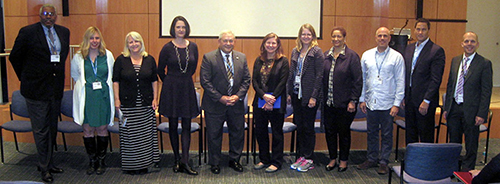 Figure 1. Presidents and association leaders representing AECT, NRA/OTEL, NCTE/CEE, ITEEA, CEC/TED, ASTE, AMTE, AACTE, ISTE/TEN, SITE, and CUFA at NTLS 2015.
Figure 1. Presidents and association leaders representing AECT, NRA/OTEL, NCTE/CEE, ITEEA, CEC/TED, ASTE, AMTE, AACTE, ISTE/TEN, SITE, and CUFA at NTLS 2015.
It was evident that a proactive approach would require collaboration with innovators developing new technologies. Rather than merely reacting to new technologies as they emerged, this approach could influence and shape new generations of educational technologies to incorporate pedagogical perspectives relevant to each discipline. In the early 2000s, digital imaging technologies were reaching a stage at which they were becoming affordable and practical for classroom use.
The NTLS associations reached out to corporate leaders in this field, including Canon, U.S.A. Terry Markwart (Figure 2), director of special markets and photographic products at Canon, accepted an invitation to collaborate with the NTLS associations.
John Park (Figure 3), a science educator with an interest in technology, took the lead on collaborating with Canon. John was a prominent member of both ASTE and SITE, and held leadership positions in both associations. He was thus uniquely positioned to provide leadership regarding potential applications of digital imaging technologies in science education. This collaboration led to a series of early innovations and educational advances.
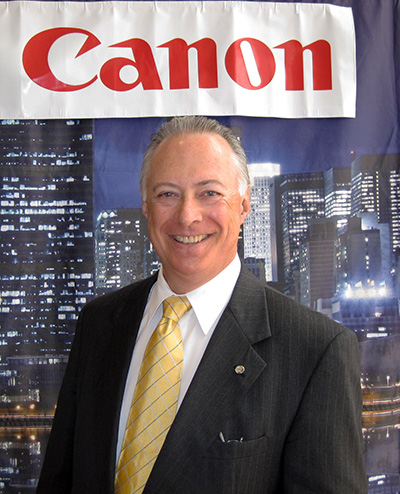
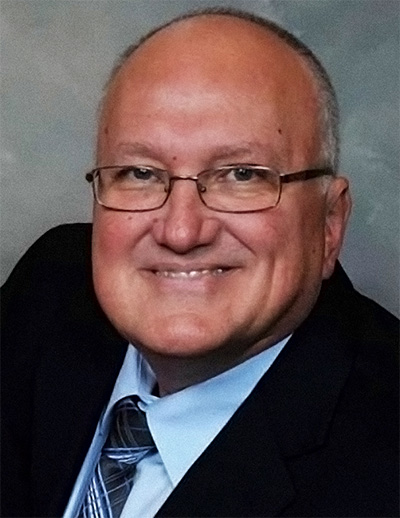
John and Terry organized an initial meeting at the Museum of Contemporary Native Arts in Santa Fe, New Mexico. CameraScope (Figure 4), an open source software application, was one of the first tools to emerge from this effort. It supported a wide range of digital imaging devices, including Canon digital cameras and commonly available webcams. It allowed educators to acquire and analyze high-quality still images, digital movies, and time-lapse movies.
 Figure 4. CameraScope
Figure 4. CameraScope
A related program supported real-time video displays and associated data collection of science experiments. At that year’s NTLS, John demonstrated the way in which this capability could augment the classic egg-in-the-bottle demonstration. In this experiment, an egg is pushed into a milk bottle by burning a paper inside the bottle.
The heat of the flame causes the air inside the bottle to expand and initially increases the air pressure inside the bottle. This increased pressure forces air out of the bottle, past the egg (which acts as a one-way valve). When the remaining air inside the bottle subsequently cools, a drop in the air pressure occurs, causing the egg to be pushed into the bottle by the external air pressure (Figure 5).
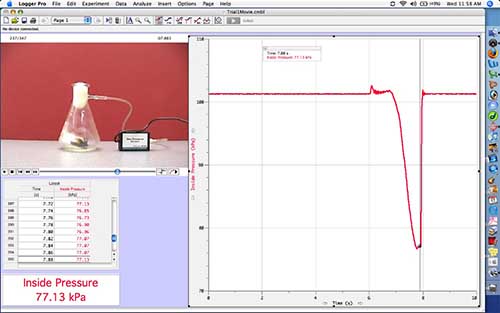 Figure 5. Application synchronizing video, data, and graph.
Figure 5. Application synchronizing video, data, and graph.
John demonstrated the way in which the addition of a pressure sensor to the demonstration allowed students to replay a video of the experiment with a synchronized graph of the internal pressure superimposed beside the video. A group of students from a local school served as a class for this demonstration.
This early work was compiled in two books, Teaching with Digital Images (Bull & Bell, 2005) and Teaching with Digital Video (Bull & Bell, 2010), both published by ISTE. They remained in ISTE’s top ten list of best-selling books for a number of years.
The AACTE Committee on Innovation and Technology subsequently provided leadership for an exploration of the way in which technology could most effectively be used in each discipline through a combination of technology, pedagogy, and content knowledge. This collaboration among associations resulted in publication of the Handbook of Technology, Pedagogy, and Content Knowledge (TPACK). This was followed by a special TPACK-themed issue in the CITE Journal and more than 200 related articles published in other journals of the collective NTLS associations.
Most recently the NTLS associations have begun to collaborate on identification of effective methods of incorporating digital fabrication technologies such as 3D printing into the curriculum. Industrial computer assisted design (CAD) applications are design tools rather than design learning tools. The need for a CAD application designed for schools was apparent. This led to collaboration among NTLS associations, Canon, and FableVision. Development of a CAD tool for K-12 students was among the goals of the Fab@School consortium. It has culminated in development of Fab@School Maker Studio, scheduled for release later this year.
The Fab@School initiative also led to collaboration with the Smithsonian Institution in conjunction with its 3D digitization program. The American Innovations in an Age of Discovery program (http://3d.si.edu/inventiona) allows students to learn science and engineering through reconstruction of key inventions in American history using digital fabrication technologies. This was the final NTLS initiative in which John and Terry participated. Therefore, it is appropriate that we gather at the National Museum of American History this evening to honor their memory.
Their joint legacy will continue in countless ways. Terry was previously recognized with the NTLS award for lifetime contributions to educational technology and teacher preparation. John also was recognized by his professional associations in a number of ways. Each of them achieved more by working together than by working individually. This outcome reflects Tom Carroll’s vision and goal for NTLS. John and Terry exemplified this tradition in the best possible manner.
For that reason we are pleased to have Terry’s brother Luther and his daughter Lindsay (Figure 6) with us tonight and his colleagues, Tom Miller and Kim Carrette, representing Canon. We are pleased to announce an NTLS award in honor of Terry’s memory.
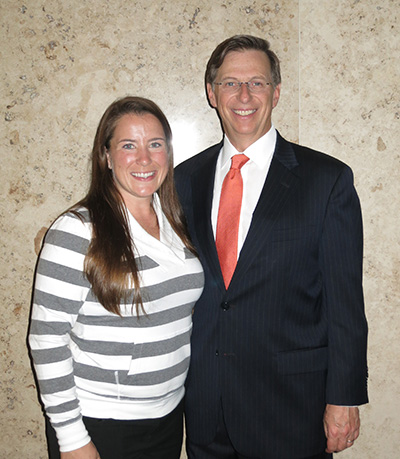 Figure 6. Lindsay Markwart (daughter) and Luther Markwart (brother).
Figure 6. Lindsay Markwart (daughter) and Luther Markwart (brother).
The Terry Markwart Award for Corporate Leadership (Figure 7) will recognize an individual who best exemplifies Terry’s vision and perspective in advancing effective use of technology in teaching and teacher education. The Markwart Award will recognize both the individual who receives it and, by extension, the corporation or firm that provided an environment allowing them to collaborate effectively with educators to bring about meaningful change.
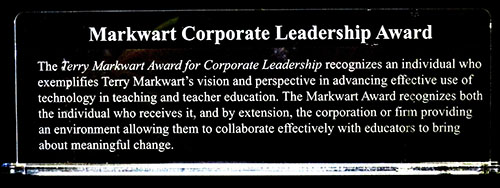 Figure 7. The Markwart Corporate Leadership Award/
Figure 7. The Markwart Corporate Leadership Award/
The National Technology Leadership Initiative (NTLI) Fellowship was established to recognize an exemplary presentation on technology at the annual conferences of ASTE, AMTE, CUFA, and CEE. The purpose of the NTLI Fellowship is to encourage further dialog among professional associations regarding appropriate technology use in teacher education.
Each year NTLI Fellows from ASTE are invited to present at the SITE conference, where they receive an award plaque, complementary conference registration, and funds up to $1,000 provided by Vernier Software and Technology to help defray travel expenses. John Park was awarded the NTLI Fellowship in 2003 as well as 2006. In other years, he was a vital member of the selection committee for the award. The boards of both ASTE and SITE have jointly approved a motion to rename the NTLI award in science as the John C. Park National Technology Leadership Initiative Fellowship (figures 8 and 9).
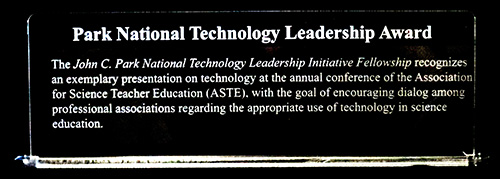 Figure 8. The John Park National Technology Leadership Award in Science Education.
Figure 8. The John Park National Technology Leadership Award in Science Education.
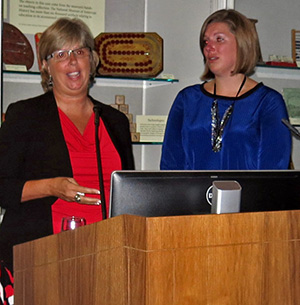 Figure 9. Lori Park (wife) and Sarah (daughter) accepting the plaque in John’s honor.
Figure 9. Lori Park (wife) and Sarah (daughter) accepting the plaque in John’s honor.
Acceptance remarks by Lindsay Markwart.
Acceptance remarks by Luther Markwart.
References
Bull, G., & Bell, L. (Eds.). (2005). Teaching with digital images: Acquire, analyze, create, communicate. Eugene, OR: International Society for Technology in Education.
Bull, G., & Bell, L. (Eds.). (2010). Teaching with digital videos: Watch, analyze, create. Eugene, OR: International Society for Technology in Education.
Carroll, T. G. (2000). If we didn’t have the schools we have today, would we create the schools we have today? Contemporary Issues in Technology and Teacher Education, 1(1), 117-140.
Robinson, S. (2015). Teacher educators unite to shape educational technology (blog post). Retrieved from the EdPrepMatters blog: http://edprepmatters.net/2015/10/teacher-educators-unite-to-shape-educational-technology
Author Notes
Glen Bull served as principal investigator for the U.S. Department of Education planning grant that culminated in establishment of the National Technology Leadership Summit (NTLS).
David Slykhuis is president of the Society for Information Technology and Teacher Education (SITE). Lisa Martin-Hansen is president of the Association for Science Teacher Education (ASTE).
Sharon Robinson is president of the American Association of Colleges of Teacher Education (AACTE), which hosts NTLS, a technology leadership retreat for presidents of teacher educator associations.
![]()